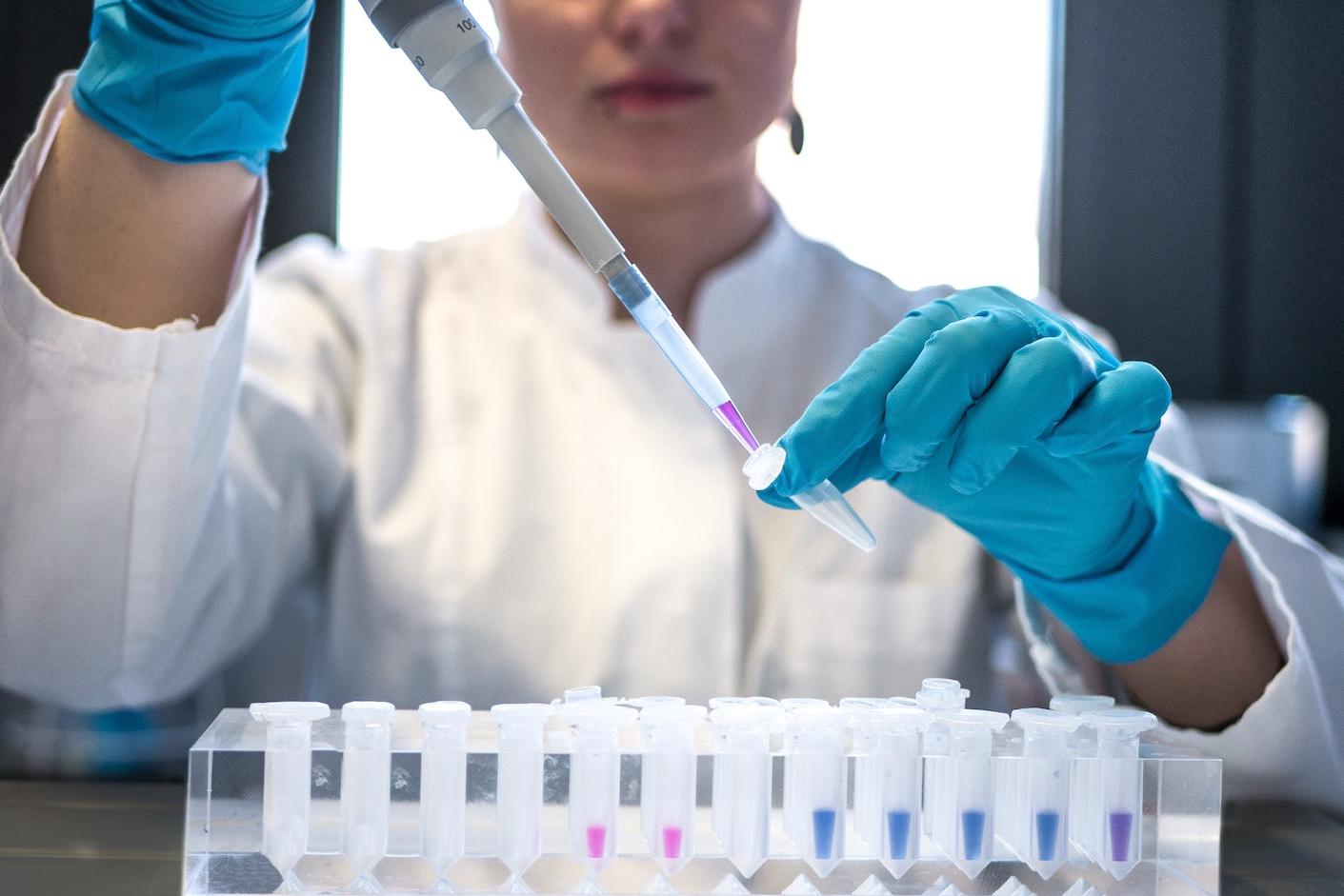
(Image: Julia Koblitz/Unsplash)
Green chemistry looks to reduce the environmental impact of manufacturing chemical products by minimizing the use of hazardous substances. Scientists may develop plant-based ingredients that replace fossil fuel feedstocks, for example, or create new processes that require fewer chemical inputs. The transition to green chemistry has been slow so far, but stakeholders are aligning to help accelerate the pace.
Estimates vary, but the consensus is that the chemical industry accounts for about 3 percent of global carbon emissions, making it one of the three largest industrial contributors to greenhouse gases alongside steel and cement.
The chemical industry is “struggling to develop appropriate business models and technologies to support its transformation,” according to a report by the professional services network Deloitte. Yet “consumer-driven demand for green products is accelerating the industry’s transformation," it found.
In September, the financial information company S&P Global cataloged the challenges ahead. Describing the chemical industry as “one of the most complex and diverse in terms of interconnected value chains,” S&P took particular notice of the sector’s heavy reliance on fossil fuels for energy and as a feedstock.
The persistence of petrochemicals
The principles of green chemistry were codified into 12 topics 25 years ago. In the U.S., these principles are supported by the American Chemistry Society as a “natural evolution” of the chemical industry. They arose from growing concerns over the causes and impacts of chemical pollution.
“Green chemistry is not politics,” according to the Society. “Green chemistry is not a public relations ploy. Green chemistry is not a pipe dream. We are able to develop chemical processes and earth-friendly products that will prevent pollution in the first place.”
Still, even after 25 years, the green chemistry movement has not gained enough momentum to catch up to, let alone surpass, petrochemicals. Despite the increased interest in biofuels, bioplastics and other renewable products, analysts anticipate that the global petrochemical industry will continue to grow.
A holistic green chemistry movement
MilliporeSigma, the U.S. and Canadian life sciences arm of the leading global firm Merck KGaA, Darmstadt, Germany, is among the stakeholders recognizing that the chemical industry must take proactive steps to accelerate the green chemistry trend and meet the increased demand for sustainable products.
“If we’re not doing it, who will do it?” said Jeffrey Whitford, vice president of sustainability and social business innovation at MilliporeSigma. “We have more than 300,000 products … so it’s good for us to know what the market needs and then apply our green chemistry.”
Using more renewable energy is an important piece of the puzzle, but it is not the only one. Developing new green chemical formulas that match — or beat — their conventional counterparts on performance is also a key pathway. As a research firm and supplier to product developers, MilliporeSigma occupies an influential, powerful position in the effort to support green chemistry.
“We are pushing to a world of radical product transparency,” Whitford said. “Changing how people do product development from the start [is the key]. We are the place where those materials start, then they get scaled up.”
Substituting bio-based feedstocks for petrochemicals is an important part of the green chemistry movement, but a holistic perspective is also needed. An example of this approach is the company’s strategy for developing bio-based solvents, which can be used for everything from pharmaceuticals to fuels. “Considering population growth and hunger, we knew not to use food crops, but we could use waste,” he said. “We found partners who were using waste as the raw materials.”
Bio-based solvents can be made from rejected potatoes and waste residue from the whiskey production process. Whiskey is made in many countries around the world. That opens up new opportunities for the local production of bio-based solvents and other green chemicals, with the potential for reducing carbon emissions related to the transportation of raw materials, Whitford said
Raising the next generation of green chemists
While companies like MilliporeSigma can leverage their position in the supply chain to accelerate the shift to green chemistry, Whitford advises that a proactive effort is needed to prevent a skills gap from creating a drag-on progress.
“For example, green chemistry is not core to the curriculum at major universities globally,” Whitford said. The U.S. alone produces 22,000 chemists with undergraduate degrees per year, he said, so introducing green chemistry as a core area of study would make a significant impact.
To help unblock the skills bottleneck, MilliporeSigma built on its existing partnership with the nonprofit organization Beyond Benign. The company’s multi-year commitment, announced last spring, will enable Beyond Benign to expand its Green Chemistry Teaching and Learning Community online platform to reach more than 4,000 educators around the world.
Beyond Benign’s 2025 goal for the U.S. is to ensure that 25 percent of graduating chemists have received instruction in green chemistry. “We support the network of academics to develop the curriculum and get universities on board with recognizing that they need to support the green chemistry workforce,” Whitford said.
Building momentum for meaningful change
Apparently, the message is getting through. Beyond Benign’s Green Chemistry Commitment has exceeded expectations, Whitford said. As of December, 150 academic institutions signed on to the Green Chemistry Commitment, surpassing the initial goal of 125.
To help support green chemistry innovation among industry leaders, working chemists and product designers, MilliporeSigma hosted the green chemistry organization Change Chemistry at the 2023 U.S. Innovators Roundtable in November. The company also launched an online tool called Dozn, which provides “greenness” comparisons among similar chemicals, systems and processes. So far, 1,500 scientists from 60 countries have used the tool, indicating global interest in the green chemistry movement.
MilliporeSigma also promotes green chemistry through its Greener Alternative Products catalog, which includes bio-based solvents and more than 2,000 other products. Overall product design is another area of opportunity. The company’s Design for Sustainability platform helps product developers reduce waste, for example, by avoiding the use of plastics and cutting down the need for packaging.
“We are seeing significant uptake, but more recognition, application and implementation are needed,” Whitford said.
In that regard, the role of consumers and businesses is clear: Keep amplifying the demand for greener products, choose to buy products that reflect those demands, and help accelerate the momentum for a more sustainable industry.

Tina writes frequently for TriplePundit and other websites, with a focus on military, government and corporate sustainability, clean tech research and emerging energy technologies. She is a former Deputy Director of Public Affairs of the New York City Department of Environmental Protection, and author of books and articles on recycling and other conservation themes.














